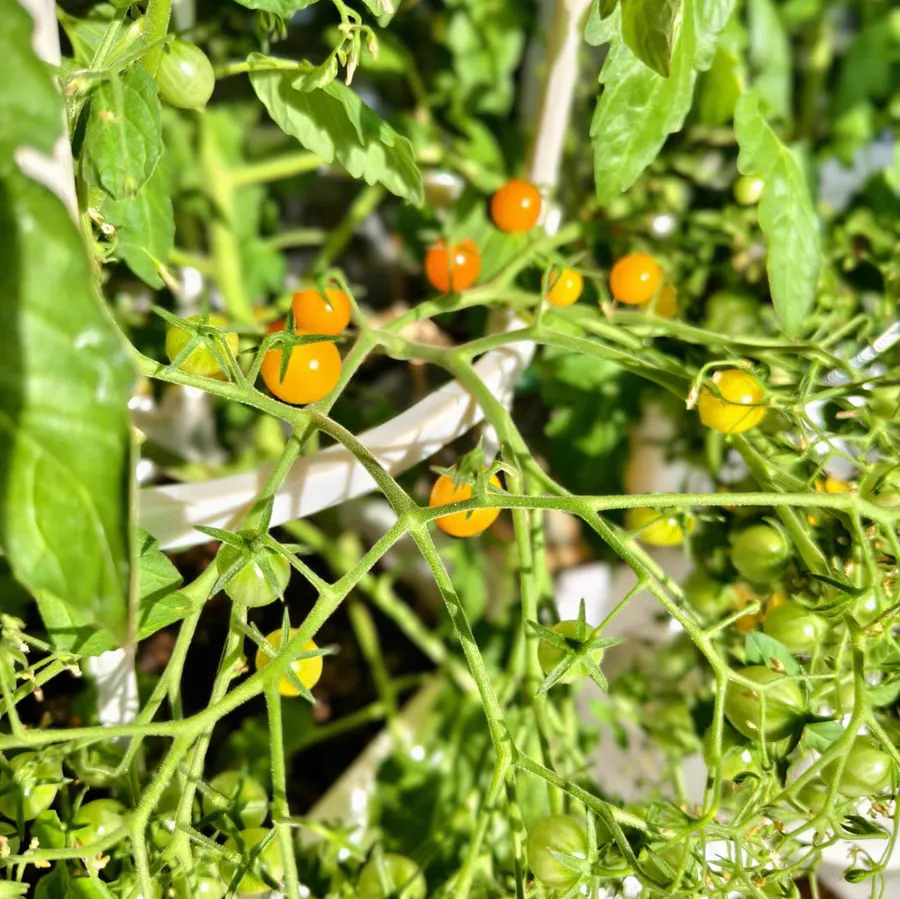Hey tomato growers! It's really frustrating when tomato seedlings suddenly wilt. Don't panic—today we'll analyze the causes of wilting and provide targeted solutions.
### 1. Temperature Issues
#### High Temperature
After intense summer sunlight or sudden sunny days following prolonged overcast weather, tomato seedling leaves may curl into tubes with dark green color, caused by high-temperature drought. High heat accelerates soil water evaporation, leading to plant water shortage.
**Solution**: Use shade nets from 11:00 to 15:00, spray water to cool down (avoid midday heat), and water slowly to keep soil moist.
#### Low Temperature
In early spring or autumn/winter, new leaves curling purple and old leaves bending downward indicate cold damage. Low temperatures reduce cell activity and root nutrient absorption.
**Solution**: Cover with plastic film or build small arch shelters for insulation, maintain nighttime temperature >12°C, and spray 1:2000 brassinosteroid to enhance stress resistance.
### 2. Water & Fertilizer Management
#### Watering
Excessive water control after transplanting can make roots float on the surface, causing wilting in high temperatures.
**Solution**: Water thoroughly with root-fixing water after transplanting, control water reasonably after seedling recovery, and avoid flood irrigation.
#### Fertilization
- Excessive nitrogen: Leaves become thick, dark green, and curled.
- Potassium/calcium deficiency: Leaf edges turn brown and curl upward, possibly with blossom end rot.
**Solution**: Suspend nitrogen fertilizer, spray 1:800 potassium dihydrogen phosphate or 1:1500 chelated calcium, and apply plant ash or gypsum to the soil to supplement potassium and calcium.
### 3. Pest & Disease Infestations
#### Root Diseases
Root rot and wilt cause roots to turn brown and rot, with wilting worsening after watering.
**Solution**: Drench with metalaxyl·fludioxonil + *Bacillus subtilis*, and rotate crops with legumes.
#### Viral Diseases
Leaves yellow, curl, and shrink, with stunted plants, spread by aphids and whiteflies.
**Solution**: Uproot and destroy diseased plants, spray ningnanmycin + zinc fertilizer to inhibit viruses, and hang yellow sticky traps to lure aphids.
### 4. Additional Notes
- If capillary roots are damaged by high temperature or concentrated fertilizer, dig out roots, air-dry them, and replant in dry soil.
- Remove root rot-infected plants promptly, and prevent diseases by mixing soil with sterilizers like thiram or carbendazim in advance.
Generally, curling and wilting symptoms will ease within 1-2 weeks after adjusting care. If symptoms persist or worsen, check for overlapping factors (e.g., viral disease + high temperature) and consider replacing with disease-resistant varieties (e.g., TY virus-resistant types) if necessary.
#TomatoGrowing #SeedlingCare #GardeningTips
The reasons why newly planted tomato seedlings are becoming increasingly wilted.

Share with
Tagged in :




Leave a Reply